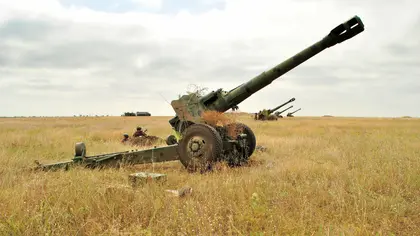It should be no surprise to anyone interested in the art of war to realize that Ukraine inherited an understanding of “maskirovka,” the art of deception, which featured in all aspects of Soviet military planning.
The Western media, including CNN, the Guardian, and the Economist among others, have also taken note of Ukrainian ingenuity in taking the art of deception on the battlefield to new heights.
What is indisputable is that it has used top levels of inventiveness to produce decoys precise enough to fool the enemy and its 21st-century targeting technology into wasting scarce and valuable weapons against junk.
In addressing this Anton Gerashchenko, an advisor to the Ukrainian government said, “You have to understand that this a war of innovation… [sophisticated] drones and satellites… can see in greater detail. It’s harder to fool the enemy who have cameras and live video. But high-quality decoys can work very well.”
The main producers of the fakes are the employees of the Metinvest steel company, which previously ran the Azovstal steelworks in Mariupol. The company’s main shareholder is the billionaire, Rinat Akhmetov, who has approved and provided much of the funding for the decoy project, according to a spokesperson.
It was during the early months of the full-scale invasion, when Ukraine had not yet started to receive Western military aid, that three of the firm’s managers proposed making decoy weapons.

Over 100 Ukrainian Drones Target Russian Regions, Strike Russia's Largest Explosives Plant
Their aim was to deploy them into the field to fool the enemy into thinking Ukraine’s forces had more weapons in a particular area. This would either deter the Russians from approaching, diverting them into an area where they could be engaged by Kyiv’s forces or waste resources in attacking them.
In August 2022, a Washington Post article showed how decoy HIMARS launchers, which were wooden mock-ups mounted on trucks, were being fired on by Russian cruise missiles.
This not only meant that Moscow was wasting these expensive munitions but also resulted in claims by the Kremlin that Ukraine was running out of its long-range weapon.
The company admits that initial replicas, such as the HIMARS launchers, were crude, but as the war has carried on the sophistication of Metinvest’s decoys have matched that of the Western weaponry Ukraine has received.
Ukraine and the Russians have also been deploying inflatable decoys, which while they have a role to play are both less visually convincing and have a habit of deflating if not properly maintained or being blown around in the wind.

D20 122mm howitzers
The real thing The decoy
Metinvest’s creations are more reliable and have an extra advantage. Because they are generally based on a metal frame, they can often be repaired after being attacked.
The latest versions are not only built to more closely resemble the weapon systems they are meant to imitate visually but also to employ material that will mislead sensors employed by the Russian drones and other targeting systems.
This not only includes a greater use of metal and other materials that would be found in the real thing, but may incorporate heat sources, that can be detected through thermal imagers, or radio sources simulating fake communication or radars lending a better chance of spoofing the enemy.
The Metinvest spokesman said “The enemy is not stupid. We have to adapt… we always look to add something new in our work.”
He went on to say that if a new model is not quickly targeted then they will feel “we got something wrong in the design,” and they will think again.
It is not only the company itself that comes up with ideas and the choice of which weapons to replicate. Often, they get requests from the military asking if they can make a particular system which they will research and plan for and if they know how to do it they may then get an order for dozens of the decoys.
Metinvest not only ensures that the final decoy looks the part but must be easily transportable and easily put together in the field.
Their version of the US M777 155mm howitzer, which uses sewer pipes for its gun barrel, is sent in a “flatpack” which can be put together in less than 30 minutes.
Using the M777 as an example, the steel company says it costs about $1,000 to make their decoy version compared with around $4 million for the real thing of which, according to the Statista website, around 140 units have been delivered to Ukraine.
Russian missiles that are frequently used to attack Ukrainian positions average between $3-6 million each.
Hitting a decoy cannot only be a costly mistake for Russia but means one less attack on genuine Ukrainian weapon system which not only saves precious equipment but, as one of Metavist’s worker says, “These can save the lives of our guys, our friends who are serving.”
You can also highlight the text and press Ctrl + Enter






